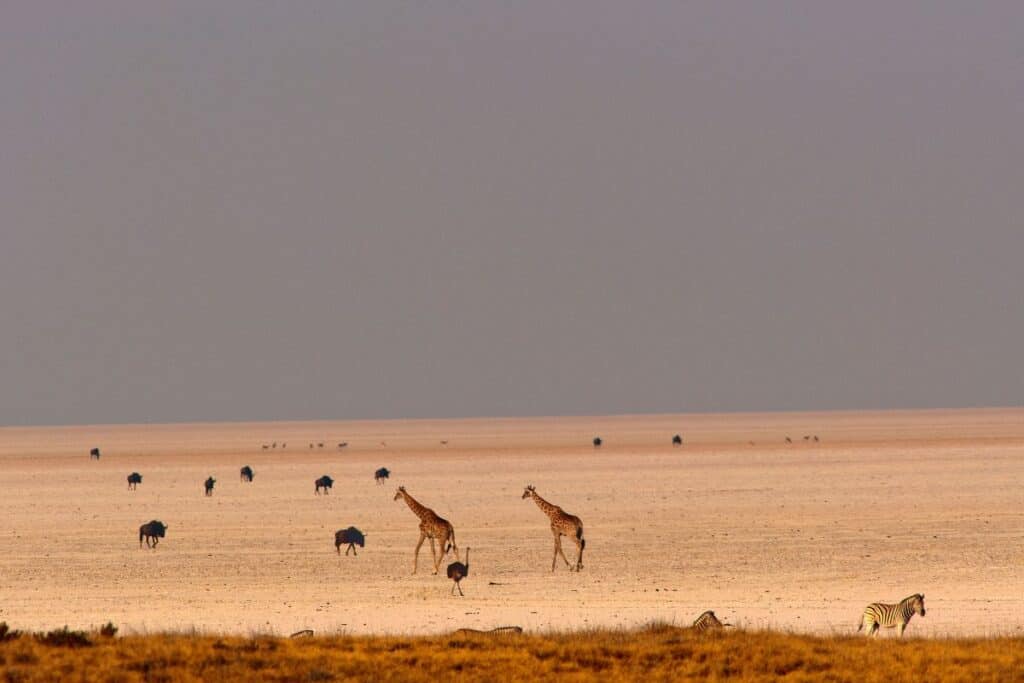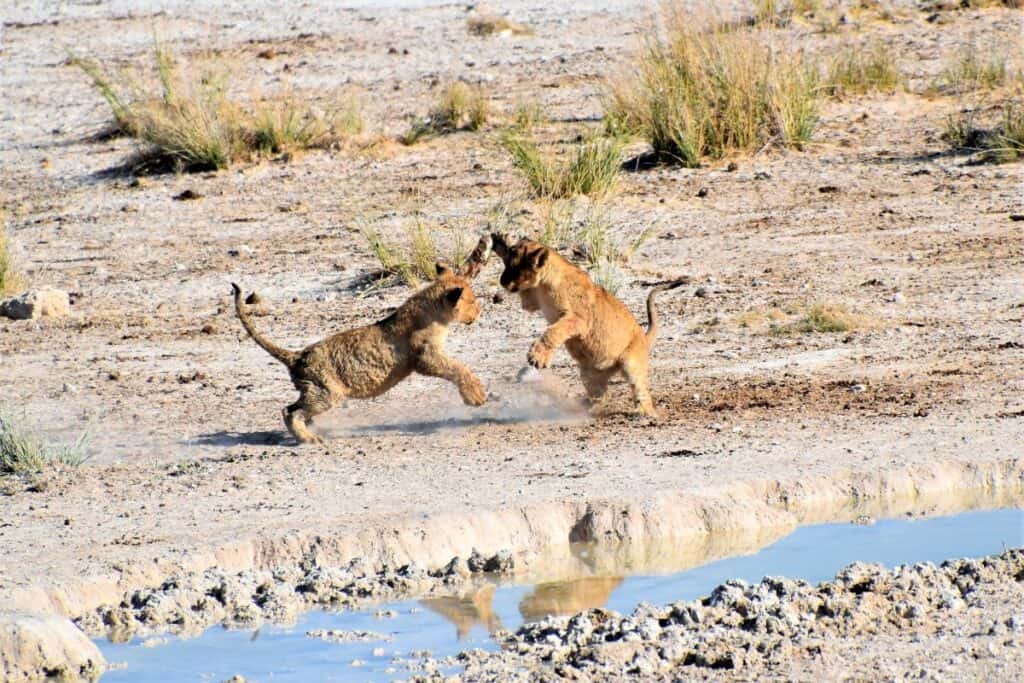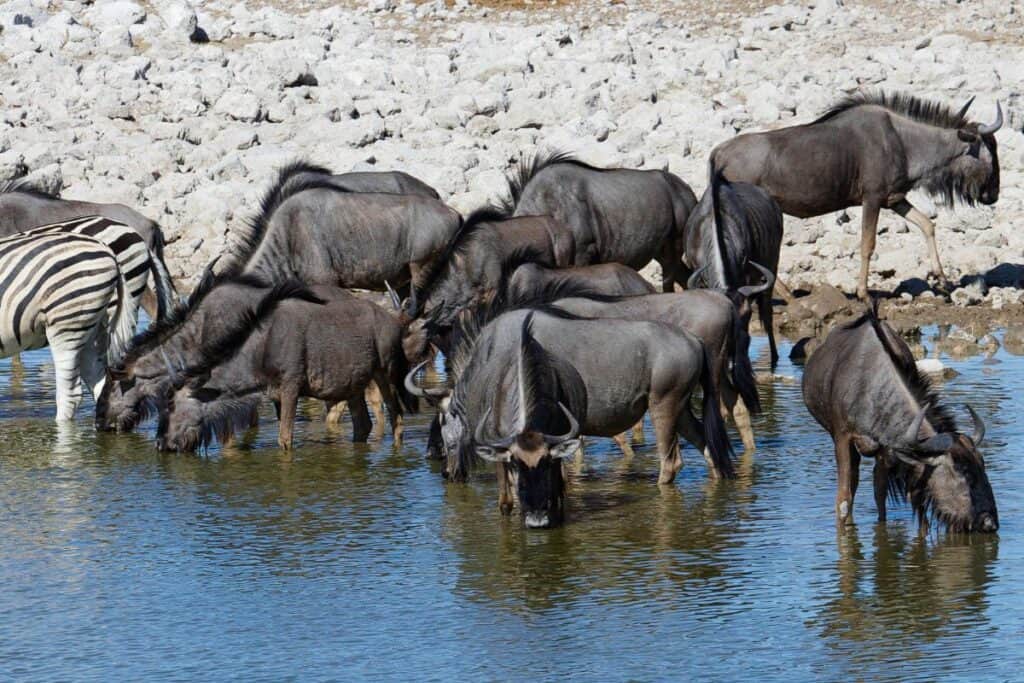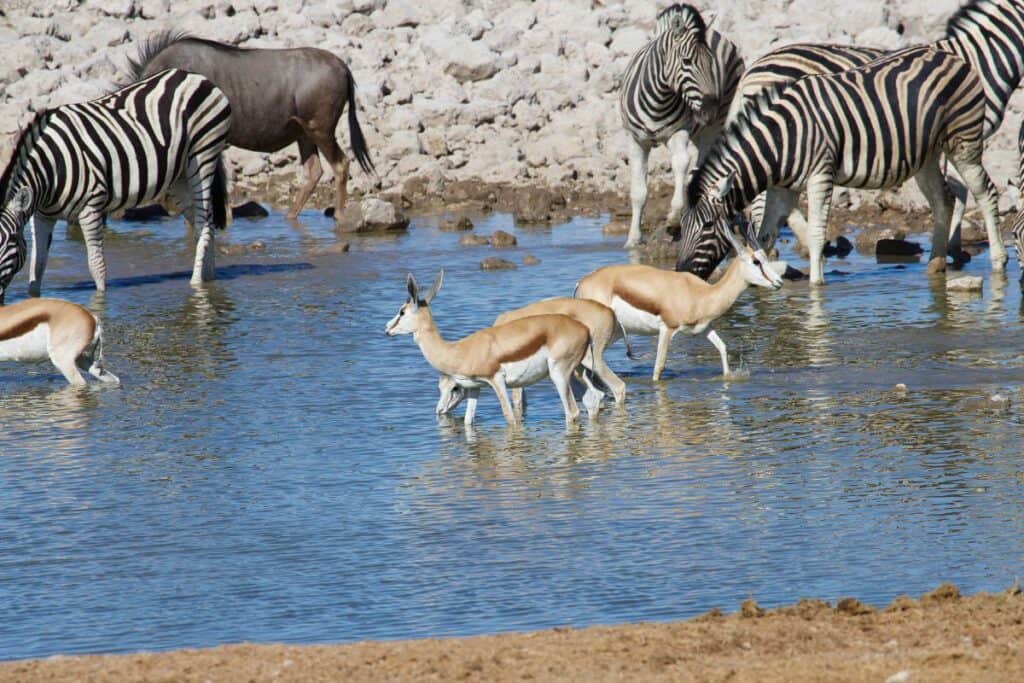Etosha National Park, located in the heart of Namibia, is one of Africa’s most remarkable and accessible wildlife sanctuaries. This vast reserve, spread over 22,270 square kilometers, is not just a wildlife haven but a window into the raw and untouched wilderness that Africa is celebrated for. With its unique landscape, diverse habitats, and an impressive array of wildlife, Etosha stands as a beacon for nature enthusiasts and animal lovers.
Table of Contents
The Geographical Tapestry of Etosha
Etosha National Park derives its name from the Etosha Pan, a large salt pan forming part of the Kalahari Basin. It is believed that this pan was once a lake, which dried up thousands of years ago. Today, the Etosha Pan covers about 23% of the park’s total area and is a large, barren, salt-encrusted flatland that glistens under the African sun. Surrounding the pan are savannas, woodlands, and smaller pans that provide lush grazing grounds after good rains, creating a stark contrast to the stark white of the Etosha Pan.

The park’s distinctive geography creates micro-environments, supporting a variety of life forms. The western part of the park is hilly with mopane woodlands, while the central and eastern sections are characterized by vast plains and sparse vegetation.
Wildlife of Etosha: Diversity at Its Best
Etosha’s true allure lies in its spectacular range of wildlife. The park is home to several rare and endangered species such as the black rhinoceros and the cheetah, but it also boasts large populations of lion, elephant, leopard, giraffe, and zebra. The park’s waterholes, strategically scattered throughout the park, serve as the nerve centers of animal activity, especially in the drier months.
Among the highlights are the African elephants, which are particularly large with notably big tusks, likely due to the minerals found in the park’s soil. Bird enthusiasts can revel in spotting some of the over 340 bird species recorded in the park, including the striking flamingo flocks that seasonally visit the pan.

The floodlit waterholes at Okaukuejo and Halali camps are famous for their night-time wildlife viewings. Here, visitors can witness a parade of wildlife in their most natural behaviors, offering an uninterrupted glimpse into the wild nightlife of Etosha’s inhabitants.
Best Times for Wildlife Sightings
Timing your visit to Etosha can dramatically influence your safari experience. The dry season, spanning from May to October, is considered the best time to visit. During these months, the scarcity of water forces animals to congregate around the available waterholes, making wildlife viewing substantially more predictable and rewarding.
The end of the dry season, particularly August through October, is peak viewing time as the vegetation is sparse and animals spend much time at waterholes. Conversely, the wet season, from November to April, transforms the park with lush greenery and a burst of new life. This period offers a unique spectacle of migratory birds and newborn animals, though the dense vegetation may make wildlife harder to spot.
Conservation Efforts and Sustainable Tourism
Etosha is not only a sanctuary for wildlife but also a center for conservation efforts and research. The park has been at the forefront of battles against poaching and habitat destruction. Through its well-managed tourism policies, Etosha contributes to the local economy and promotes conservation awareness among visitors.

Sustainable tourism is emphasized, with restrictions on the number of visitors and stringent rules to minimize human impact on the natural environment. The park’s approach to conservation ensures that it remains a refuge for endangered species and maintains its ecological balance.
Planning Your Visit
When planning a visit to Etosha, it’s advisable to stay for at least three to four days to truly appreciate the park’s vastness and its wildlife. Accommodations range from camping sites to luxurious lodges, catering to different preferences and budgets. Each rest camp within the park—Okaukuejo, Halali, and Namutoni—offers unique experiences, from watching animals at the waterholes to taking guided night drives.
Photographic Safaris and Artistic Inspirations
Etosha National Park is a photographer’s paradise. The stark contrast of the dry white Etosha Pan against the vibrant colors of the savannah, the spectacular sunsets, and the abundance of wildlife create breathtaking backdrops for both amateur and professional photographers. Photographic safaris specifically cater to those looking to capture the magic of Etosha through their lenses, offering guided tours that focus on finding the best spots and times for photography.

Artists and filmmakers also find inspiration in Etosha’s landscapes and wildlife. The park has been the subject of numerous documentaries and art pieces that showcase its beauty and the stories of its inhabitants. These artistic endeavors play a crucial role in raising global awareness about the park and its conservation needs.
Conclusion
Etosha National Park is a testament to Namibia’s commitment to preserving its natural heritage. Its accessible location, combined with its rich biodiversity, makes it an ideal destination for those looking to experience Africa’s wildlife in its most pristine form. Whether you are a seasoned safari-goer or a first-time visitor, Etosha provides an unparalleled opportunity to connect with nature and witness the rhythm of wildlife. Here, in the wild expanses of Namibia, you truly stand in nature’s domain.
Read the Namibia article here.
